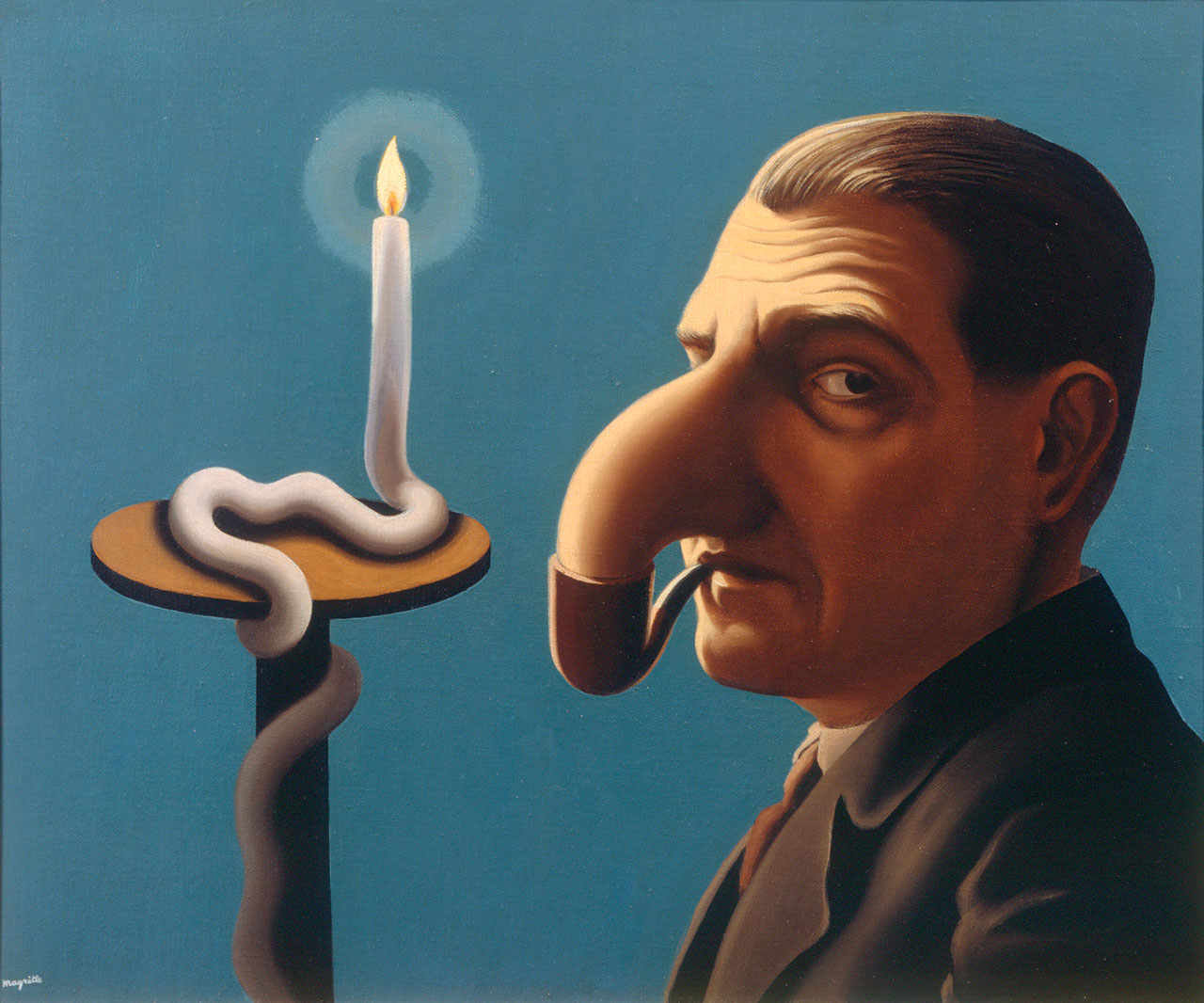
Who was René Magritte?
Clouds, pipes, bowler hats and green apples: these remain some of the instantly recognizable icons of René Magritte, the Belgian surrealist painter. His career began as a graphic artist and quasi-abstract painter, but his work underwent a transformation in 1926, when he began to reinvent himself as a figurative artist. The Belgian painter ended up reinventing painting as a critical tool that can challenge perception and engage the viewer's mind.
"Art, as I understand it defies psychoanalysis…I take care to only paint pictures that evoke the mystery of the world…No sensible man believes that psychoanalysis could explain the mystery of the world." — René Magritte
Here are seven facts about René Magritte, the Belgian surrealist painter.

1. Magritte was one of the main members of the surrealist movement, but his works influenced artists of different styles and approaches, mainly Pop Art.
Throughout his career, Magritte returned to certain themes, including mirrors, ambiguously open or closed windows, open sky and wallpaper patterns, which played with tensions between representation and reality. Such works often illustrated scenes that undermined the natural laws of optics and perception. Over time, these images became iconic and contributed to a wider world of Magritte's creation. Its clean aesthetic and treatment of everyday objects influenced the work of Ed Ruscha, Andy Warhol, Jasper Johns and others.

2. Many songs were written in reference to Magritte and her work.
In this vein, since the 1960s, many of Magritte's works have appeared as album covers for bands and recording artists, includingThe Listening Room, 1952, which appears in the band Beck-Ola by The Jeff Beck Group, The Philosopher's Lamp 1936, which appears on The Album Pipedream by Alan Hull, The Lovers 1928 as the Punch Brothers album cover for The Phosphorescent Blues and many others, including John Cale's 2003 song "Magritte" and Paul Simon's "René and Georgette Magritte with Their Dog after the War" in 1983.

3. René Magritte's intense and long marriage to Georgette Berger marked his entire life
The tenacity of this relationship contributed to the development of his career. They were never divorced, although both had other relationships. Magritte even had an affair with artist Sheila Legge. At that point, the couple temporarily estranged for almost four years, until they finally reconciled and remained together until his death.

4. René Magritte's mother struggled with mental health issues.
After several attempts, Magritte's mother committed suicide, drowning herself in a river near the family home when René was fourteen. Magritte was believed to have been present when her body was pulled from the water, her face obscured by her dress, an image the artist struggled with in many of his works. Most historians have discredited the myth of her presence on the river, although the suicide undoubtedly affected her life and work, and even her fixation on hats can be attributed to her mother's occupation as a milliner before her marriage.

5. There is a street named after Magritte.
Brussels, where Magritte spent most of his life, named a street after Ceci n'est pas une rue , which means “This is not a street”, in homage to his most famous work, The Betrayal of Images. Magritte implemented text in many of his paintings to explore the structures of visual signs and the role of perception in art and language. His most famous work, The Betrayal of Images , exemplifies this exam, as it features a pipe above the phrase 'Ceci n'est pas une pipe', that means "This is not a pipe”, confronting the spectator with the means of representation, and the fact of the image and the word in contradiction with real objectivity.

6. The painting Olympia de Magritte was stolen.
In 2009, two gunmen stole the painting Olympia de Magritte, a nude portrait of the artist's wife, from the Magritte museum. It was returned in perfect condition in 2012 because the painting's fame and recognition made it impossible to sell on the black market. The painting is valued at $1.1 million.

7. Magritte deviated from his surrealist naturalist aesthetic in the 1940s.
During the German occupation of Belgium, Magritte briefly painted in an Impressionist style, with loose brushstrokes and playful colors, known as his "Renoir period". Between 1947 and 1948, the “vache period” took place, in which he produced works of a fauvist nature, with contrasts and acid colors. It returned to its pre-war surrealist style in late 1948.

